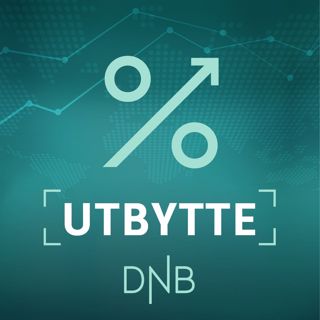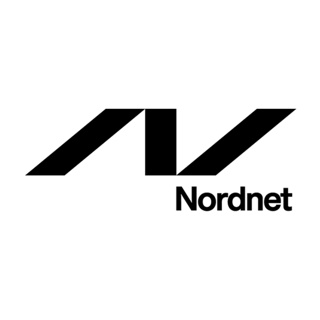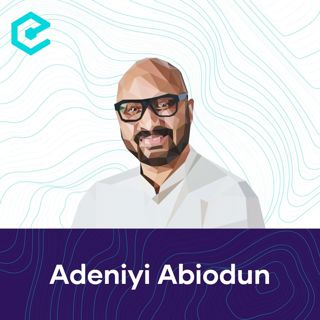
Mysten Labs: How Sui Leverages Move to Build the Composable Web3nternet - Adeniyi Abiodun
Founded by former Meta Diem team members, Sui is a high-performance, layer-1 blockchain designed for horizontal scaling and low-latency transactions. It uses an object-centric data model and the Move programming language to enable transaction parallelization which can handle >200,000 txs/s. Sui’s goal is to combine the benefits of blockchains with Web2’s security & frictionless UX. From account abstraction & ZKLogin, to on-chain storage & data availability solutions like Walrus, Sui rebuilds the Google/AWS stack, fully on-chain and composable.Topics covered in this episode:Adeniyi’s background, from Libra to SuiSui’s long-term visionThe tech stack of Sui & its primitivesZKLogin & account abstractionObject-based approachTransaction processing & parallelizationDevEx on Move vs. EVM vs. SVMConsensus & scalabilityMEVGaming & SuiPlayDeFi on SuiWalrus data storageNautilusFuture roadmapEpisode links:Adeniyi Abiodun on XMysten Labs on XSui on XWalrus on XSponsors:Gnosis: Gnosis builds decentralized infrastructure for the Ethereum ecosystem, since 2015. This year marks the launch of Gnosis Pay— the world's first Decentralized Payment Network. Get started today at - gnosis.ioChorus One: one of the largest node operators worldwide, trusted by 175,000+ accounts across more than 60 networks, Chorus One combines institutional-grade security with the highest yields at - chorus.oneThis episode is hosted by Brian Fabian Crain.
29 Apr 1h 3min

Maple Finance: On-Chain Institutional Yield & Lending Markets - Sidney Powell
With an extensive experience in traditional money markets, Maple Finance was envisioned as an institutional capital marketplace which combines the transparency & capital efficiency of blockchains with the regulatory framework of TradFi. Unlike many DeFi protocols that require over-collateralized loans (e.g. Aave), Maple also specializes in under-collateralized lending, enabling greater capital efficiency for institutional borrowers. With over $6b in loans since its inception, Maple plans to further expand its offerings by including RWAs as collateral assets.Topics covered in this episode:Sid’s backgroundThe vision behind Maple FinanceMaple’s tech stackDeciding risk profilesOver-collateralized vs. under-collateralized loansAssets accepted as collateralDeploying to other blockchainsInstitutional appealManaging defaultsRWAConverging DeFi & TradFiBiggest challengesExciting upcoming trendsFuture roadmapCrypto correlation or decoupling?Episode links:Sid Powell on XMaple Finance on XSponsors:Gnosis: Gnosis builds decentralized infrastructure for the Ethereum ecosystem, since 2015. This year marks the launch of Gnosis Pay— the world's first Decentralized Payment Network. Get started today at - gnosis.ioChorus One: one of the largest node operators worldwide, trusted by 175,000+ accounts across more than 60 networks, Chorus One combines institutional-grade security with the highest yields at - chorus.oneThis episode is hosted by Friederike Ernst.
25 Apr 54min

Tally: The Software Layer for Tokenized Organizations - Dennison Bertram
Tally is a software platform designed to support tokenized organizations, particularly Decentralized Autonomous Organizations (DAOs) and crypto communities. It provides tools for launching tokens, governing protocols, and enabling staking to foster community participation and growth. Tally facilitates onchain governance, allowing transparent and decentralized decision-making for managing funds, grants, and protocol upgrades. It powers major blockchain ecosystems like Arbitrum, ZKsync, Uniswap DAO and Wormhole DAO by providing interfaces for proposal creation, voting, and staking. The Tally Protocol further enhances this by offering a liquidity layer for governance tokens, that allow token holders to earn staking rewards while retaining voting rights and participating in DeFi.Topics covered in this episode:Dennison’s backgroundHas crypto won?Does privacy still matter?The vision behind TallyThe evolution of DAOsAre grassroots DAOs viable?Corporate vs. DAO PMFHow developer activity & contributors evolvedTally’s roadmapICO vs. IPOEpisode links:Dennison Bertram on XTally on XSponsors:Gnosis: Gnosis builds decentralized infrastructure for the Ethereum ecosystem, since 2015. This year marks the launch of Gnosis Pay— the world's first Decentralized Payment Network. Get started today at - gnosis.ioChorus One: one of the largest node operators worldwide, trusted by 175,000+ accounts across more than 60 networks, Chorus One combines institutional-grade security with the highest yields at - chorus.oneThis episode is hosted by Friederike Ernst.
17 Apr 1h 1min
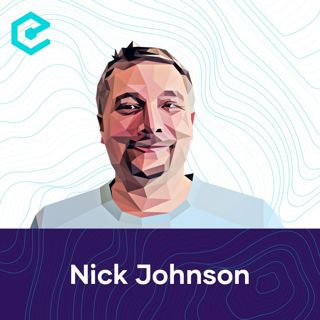
ENS V2 Cross-Chain Domains & Namechain - Nick Johnson
Namechain is an L2 developed by ENS Labs, to enhance the scalability and efficiency of managing decentralized identities on Ethereum. It is designed to work in tandem with ENS V2, which introduced a hierarchical registry system for more efficient subdomain management and custom resolvers. A key vision for Namechain is to unify multi-chain user identities, creating a "digital identity chain" that simplifies how users interact with the broader blockchain ecosystem. This is achieved through features like L2-to-L2 bridging, which allows users to initiate ENS-related activities from various Ethereum Layer 2 networks, not just Namechain itself.Topics covered in this episode:High level overview of ENSCrosschain functionality through CCIP ReadDomain squattingOnboarding ENS users via Paypal and VenmoGoogle & GoDaddy integrationsENS V2 upgrade & NamechainTransferring tokens from Namechain to L1Sequencer security assumptionsScalabilityNew features & use casesENS roadmap & metricsEthereum ecosystem statusEpisode links:Nick Johnson on XENS on XSponsors:Gnosis: Gnosis builds decentralized infrastructure for the Ethereum ecosystem, since 2015. This year marks the launch of Gnosis Pay— the world's first Decentralized Payment Network. Get started today at - gnosis.ioChorus One: one of the largest node operators worldwide, trusted by 175,000+ accounts across more than 60 networks, Chorus One combines institutional-grade security with the highest yields at - chorus.oneThis episode is hosted by Friederike Ernst.
9 Apr 48min
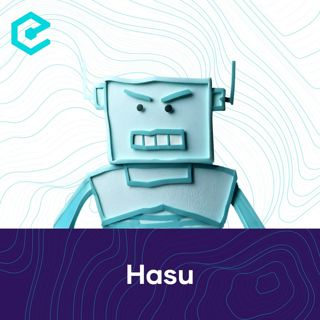
Lido V3: Ushering in Institutional Staking Through stVaults - Hasu
Ethereum’s transition from proof-of-work to proof-of-stake created a unique set of conditions (i.e. lack of protocol-level delegation, 32 ETH requirement, long exit queues, etc.) that led to Lido’s liquid staking model to gain huge traction, significantly eclipsing other LSD providers on native PoS chains. stETH added on-demand liquidity, bypassing withdrawal windows, while also increasing DeFi utilization and increasing yields. Moreover, by allowing users to stake any amount of ETH in pools, it removed the requirement for 32 ETH increments, ultimately improving decentralisation through long tail distribution of individual stakers. Lido V3 introduces modular stVaults which enable staking customization. This allows professional actors, such as institutional stakers, to have granular control over validators, MEV and other parameters, diversifying their investment strategies.Topics covered in this episode:Hasu’s backgroundDiscovering LidoLiquid staking and the early days of LidoWhy liquid staking gained traction on EthereumThe evolution of LidoInitial decentralisation concerns and the importance of dual governanceRestakingLido V3 and vaultsInstitutional staking & ETFsEthereum’s ‘crisis’ and its valuesEpisode links:Hasu on XLido on XSponsors:Gnosis: Gnosis builds decentralized infrastructure for the Ethereum ecosystem, since 2015. This year marks the launch of Gnosis Pay— the world's first Decentralized Payment Network. Get started today at - gnosis.ioChorus One: one of the largest node operators worldwide, trusted by 175,000+ accounts across more than 60 networks, Chorus One combines institutional-grade security with the highest yields at - chorus.oneThis episode is hosted by Brian Fabian Crain.
1 Apr 1h 19min

Ronin: How Axie Infinity Kickstarted the Blockchain Gaming Revolution - Jeff Zirlin
While DeFi’s ultimate goal is to provide an alternative for TradFi, blockchain gaming caters to retail masses, onboarding millions of users to crypto through incentives and fun gameplay. The greatest success story in Web3 gaming thus far has been, without a doubt, Axie Infinity. Apart from creating an engaged community whose early adopters also experienced rags-to-riches stories, it kickstarted an entire movement around play-to-earn gaming. Many have tried copying it, yet most of them failed. Axie Infinity managed to design a sustainable economy that combined NFTs and fungible tokens. The result was the first gamified crypto mining event, at scale. In order to accommodate such a massive demand, in a time when L2 rollups were still in R&D, Sky Mavis founded Ronin, a gaming-oriented Ethereum sidechain. The community that formed around Axie Infinity created a tremendous network effect, solidifying Ronin’s PMF as a gaming powerhouse. Before long, many up-and-coming titles migrated to Ronin, and the growth effects in all their key metrics (i.e. DAUs, transactions, revenue, etc.) further fuelled the flywheel.Topics covered in this episode:Jeff’s backgroundCryptokittiesJoining Axie Infinity and how it evolvedMonetizing Axie’s economyThe recipe for successful blockchain gamesBuilding Ronin, the gaming L1On-chain vs. off-chain game elementsCommunity buildingRonin’s economy & composabilityMost suitable gaming genre for Web3AI x gamingCrypto gaming investmentsRonin’s current state and future roadmapAxie’s upcoming MMOEpisode links:Jeff Zirlin on XAxie Infinity on XRonin on XSky Mavis on XSponsors:Gnosis: Gnosis builds decentralized infrastructure for the Ethereum ecosystem, since 2015. This year marks the launch of Gnosis Pay— the world's first Decentralized Payment Network. Get started today at - gnosis.ioChorus One: one of the largest node operators worldwide, trusted by 175,000+ accounts across more than 60 networks, Chorus One combines institutional-grade security with the highest yields at - chorus.oneThis episode is hosted by Brian Fabian Crain.
27 Mar 54min
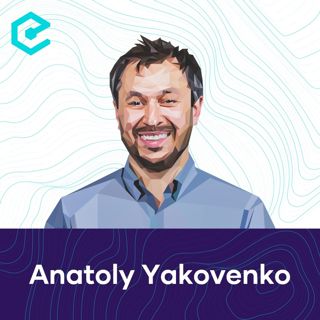
Solana: From On-Chain Nasdaq to the Pump Fun Craze - Anatoly Yakovenko
Solana needs no introduction. Ever since its inception, it pushed throughput scaling on a single chain, without the need of sharding or rollups. Despite its ups and downs that culminated at the bottom of the bear market after the FTX crash, it managed to not only survive, but build a vibrant community around crypto's (arguably) most prominent PMF (thus far).Join us for a fascinating discussion and learn about Anatoly's take on controversial topics such as MEV, concurrent block leaders (the equivalent of Ethereum's PBS proposal), L2 rollups, Solana economics, how to tackle potential exploits and more.Topics covered in this episode:How the original Solana vision turned outWhat makes blockchains valuableMEV & program writable accountsConcurrent block proposersCurrent bottlenecks for scaling SolanaMainnet vs. L2 rollupsFiredancer upgradeHalting the network vs. rollbacksSolana’s scaling roadmapDoubleZeroWorst hacks on SolanaUI exploits, Bybit hack and smart contract securitySolana economics and the SIMD-0228 proposalFuture improvementsUse cases for blockchainsSolana mobileEpisode links:Anatoly Yakovenko on XSolana on XSolana Mobile on XSponsors:Gnosis: Gnosis builds decentralized infrastructure for the Ethereum ecosystem, since 2015. This year marks the launch of Gnosis Pay— the world's first Decentralized Payment Network. Get started today at - gnosis.ioChorus One: one of the largest node operators worldwide, trusted by 175,000+ accounts across more than 60 networks, Chorus One combines institutional-grade security with the highest yields at - chorus.oneThis episode is hosted by Brian Fabian Crain & Martin Köppelmann.
15 Mar 1h 18min
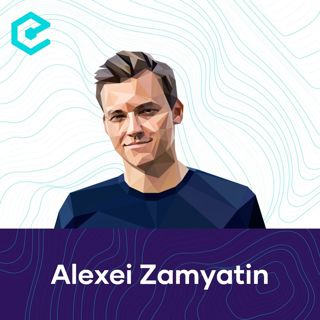
Build on Bitcoin: Combining Bitcoin's Security With Ethereum's Versatility - Alexei Zamyatin
Bitcoin’s security and reliability as a store of value are undeniable. However, its liquidity remained untapped for too long due to a lack of trustless bridges and native smart contract capabilities. As BTC is only native to Bitcoin’s L1, any attempt to include it in DeFi relies on the trust assumptions of third party custodians that wrap it. Build On Bitcoin (BOB) aims to expand Bitcoin’s functionality by integrating it with Ethereum’s smart contract capabilities. BOB operates as an OP Stack L2 with a hybrid design incorporating ZKPs, Bitcoin staking, and Ethereum for data availability. By functioning as a rollup, BOB processes transactions off-chain and batches them for settlement on Bitcoin and Ethereum, significantly improving transaction speed and reducing costs compared to Bitcoin’s base layer.Topics covered in this episode:Alexei’s backgroundSetbacks for Bitcoin DeFiBitcoin bridgesBitVMBOB operators and trust assumptionsBOB architecture & Bitcoin stakingBitcoin LSTsThe future of Bitcoin DeFiEpisode links:Alexei Zamyatin on XBuild on Bitcoin on XSponsors:Gnosis: Gnosis builds decentralized infrastructure for the Ethereum ecosystem, since 2015. This year marks the launch of Gnosis Pay— the world's first Decentralized Payment Network. Get started today at - gnosis.ioChorus One: one of the largest node operators worldwide, trusted by 175,000+ accounts across more than 60 networks, Chorus One combines institutional-grade security with the highest yields at - chorus.oneThis episode is hosted by Brian Fabian Crain.
10 Mar 1h 10min










